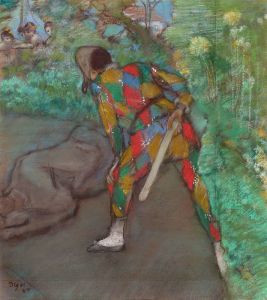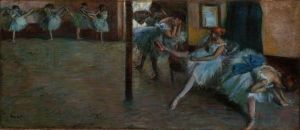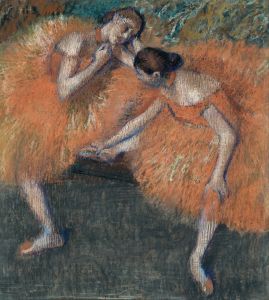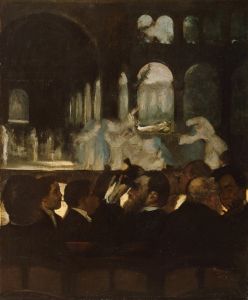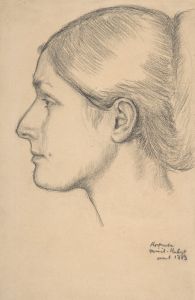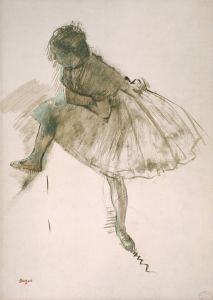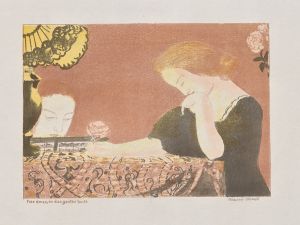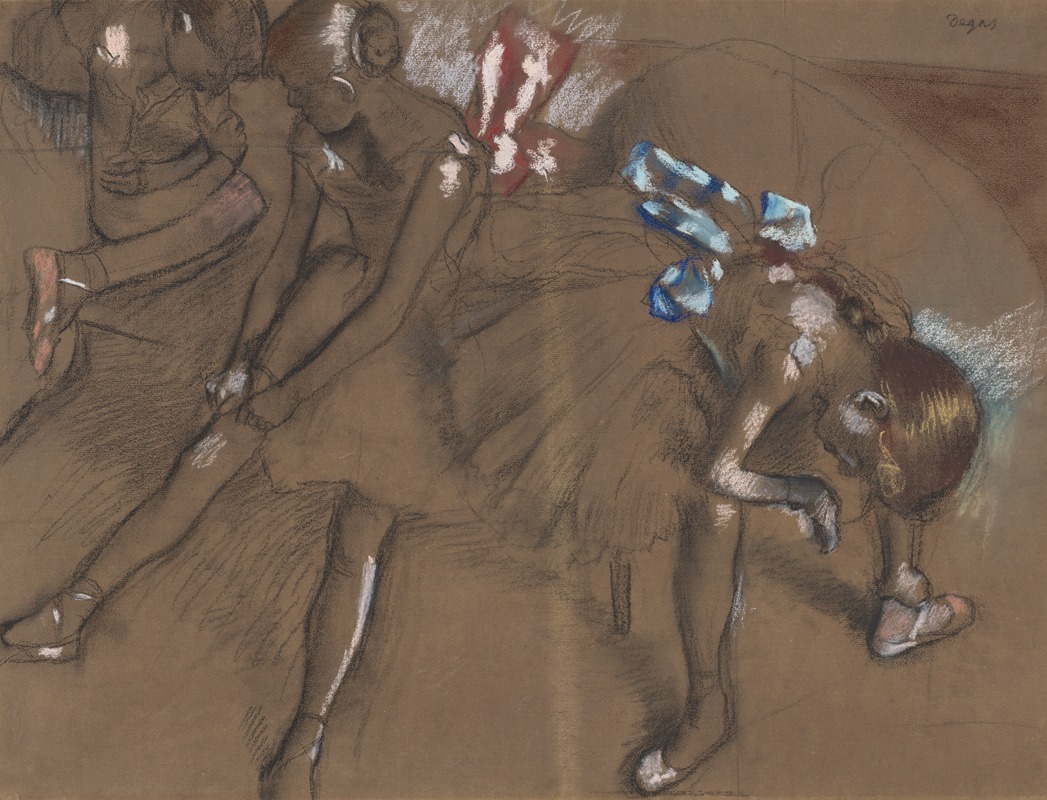
Three Dancers Resting
A hand-painted replica of Edgar Degas’s masterpiece Three Dancers Resting, meticulously crafted by professional artists to capture the true essence of the original. Each piece is created with museum-quality canvas and rare mineral pigments, carefully painted by experienced artists with delicate brushstrokes and rich, layered colors to perfectly recreate the texture of the original artwork. Unlike machine-printed reproductions, this hand-painted version brings the painting to life, infused with the artist’s emotions and skill in every stroke. Whether for personal collection or home decoration, it instantly elevates the artistic atmosphere of any space.
Edgar Degas, a prominent French artist associated with the Impressionist movement, is renowned for his depictions of dancers, capturing the grace and poise of ballet performers in various stages of their routines. One of his notable works, "Three Dancers Resting," exemplifies his fascination with the world of dance and his innovative approach to composition and technique.
"Three Dancers Resting" is a pastel drawing that showcases Degas's mastery in capturing the human form and movement. The artwork features three ballet dancers in a moment of repose, offering a glimpse into the behind-the-scenes world of the ballet. Unlike the dynamic performances typically associated with dancers, this piece focuses on a quieter, more intimate moment, highlighting the physical demands and the moments of rest that are integral to a dancer's life.
Degas's use of pastel in this work is particularly noteworthy. Pastel allowed him to achieve a softness and immediacy that suited his interest in capturing fleeting moments. The medium also enabled him to layer colors and create a sense of depth and texture, which is evident in the delicate rendering of the dancers' tutus and the subtle play of light and shadow on their bodies. The choice of pastel reflects Degas's innovative spirit and his willingness to experiment with different materials to achieve his artistic vision.
The composition of "Three Dancers Resting" is carefully considered, with the figures arranged in a way that guides the viewer's eye across the scene. Degas often employed unconventional viewpoints and cropping in his work, influenced by the burgeoning field of photography and Japanese prints, which were popular in Europe at the time. In this drawing, the dancers are positioned in a diagonal line, creating a sense of movement even in their stillness. This arrangement not only emphasizes the physicality of the dancers but also creates a dynamic tension within the composition.
Degas's interest in ballet was not merely aesthetic; it was also deeply personal. He was a frequent visitor to the Paris Opéra, where he observed and sketched dancers both on stage and in rehearsal. This close observation allowed him to capture the nuances of their movements and the reality of their lives, which were often far removed from the glamour of performance. His works, including "Three Dancers Resting," offer a more realistic portrayal of dancers, highlighting their discipline, dedication, and the often unseen aspects of their profession.
"Three Dancers Resting" is a testament to Degas's ability to blend technical skill with a deep understanding of his subjects. Through his innovative use of pastel and his keen eye for composition, Degas created a work that continues to resonate with audiences, offering insight into the world of ballet and the enduring appeal of his artistic vision.





